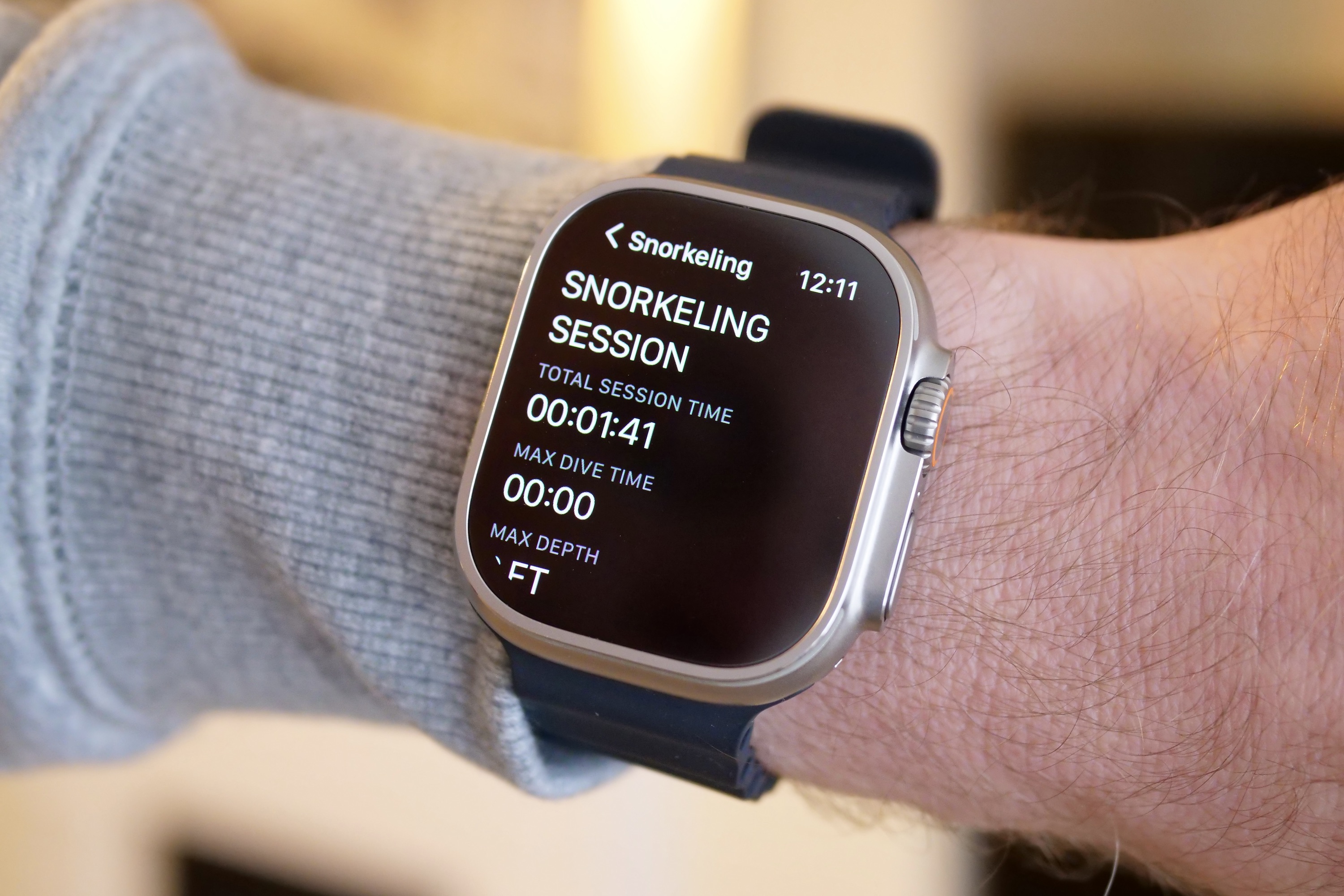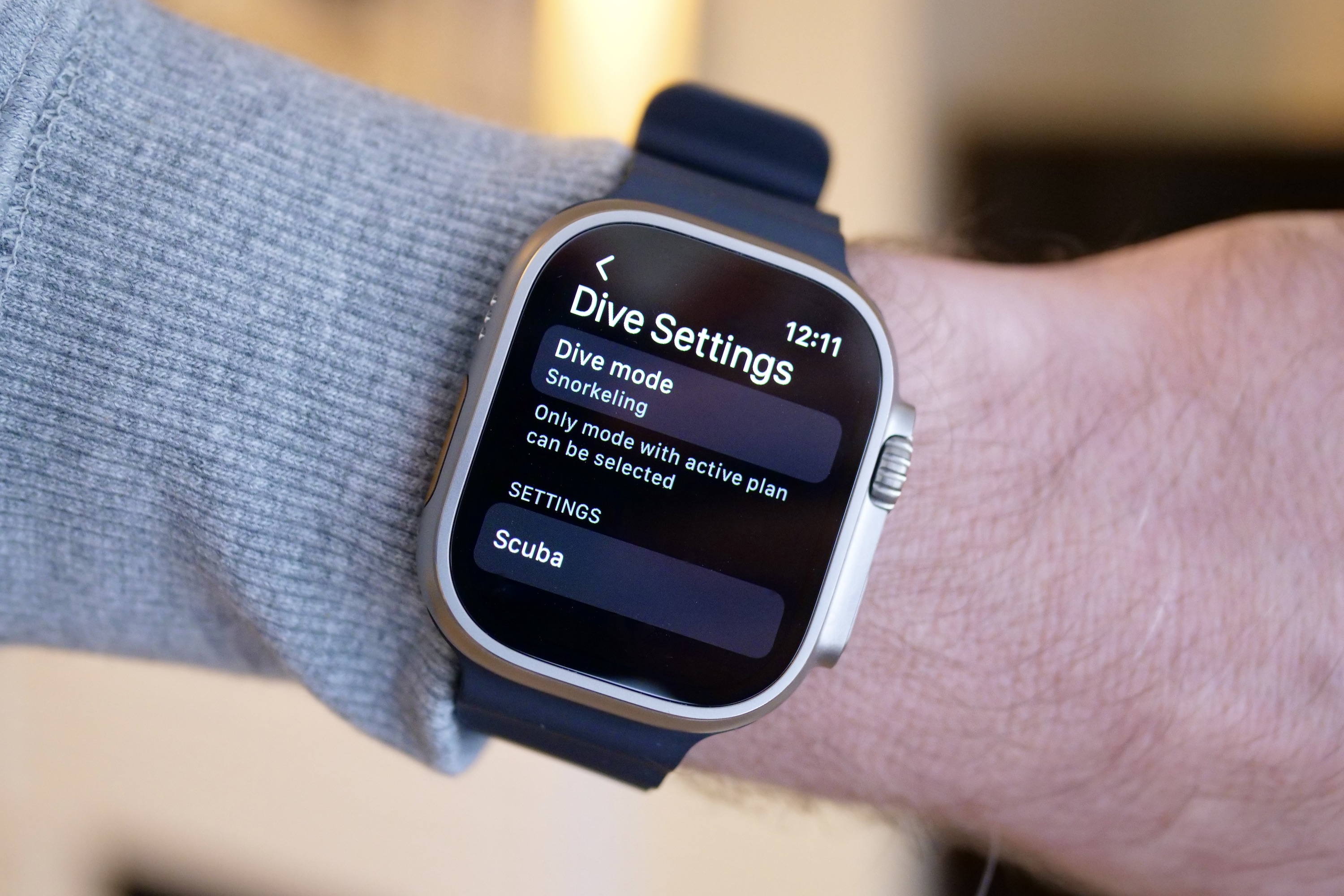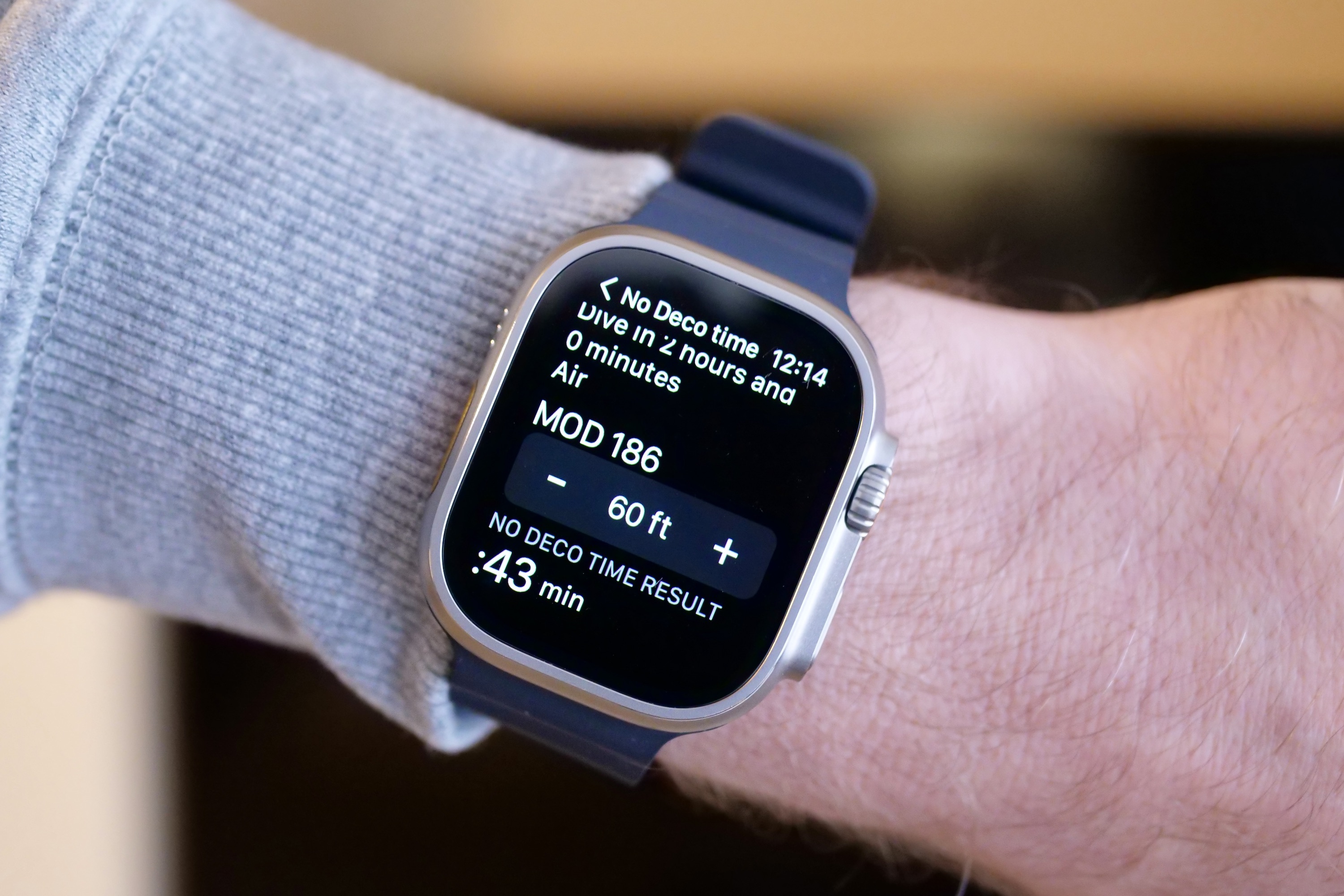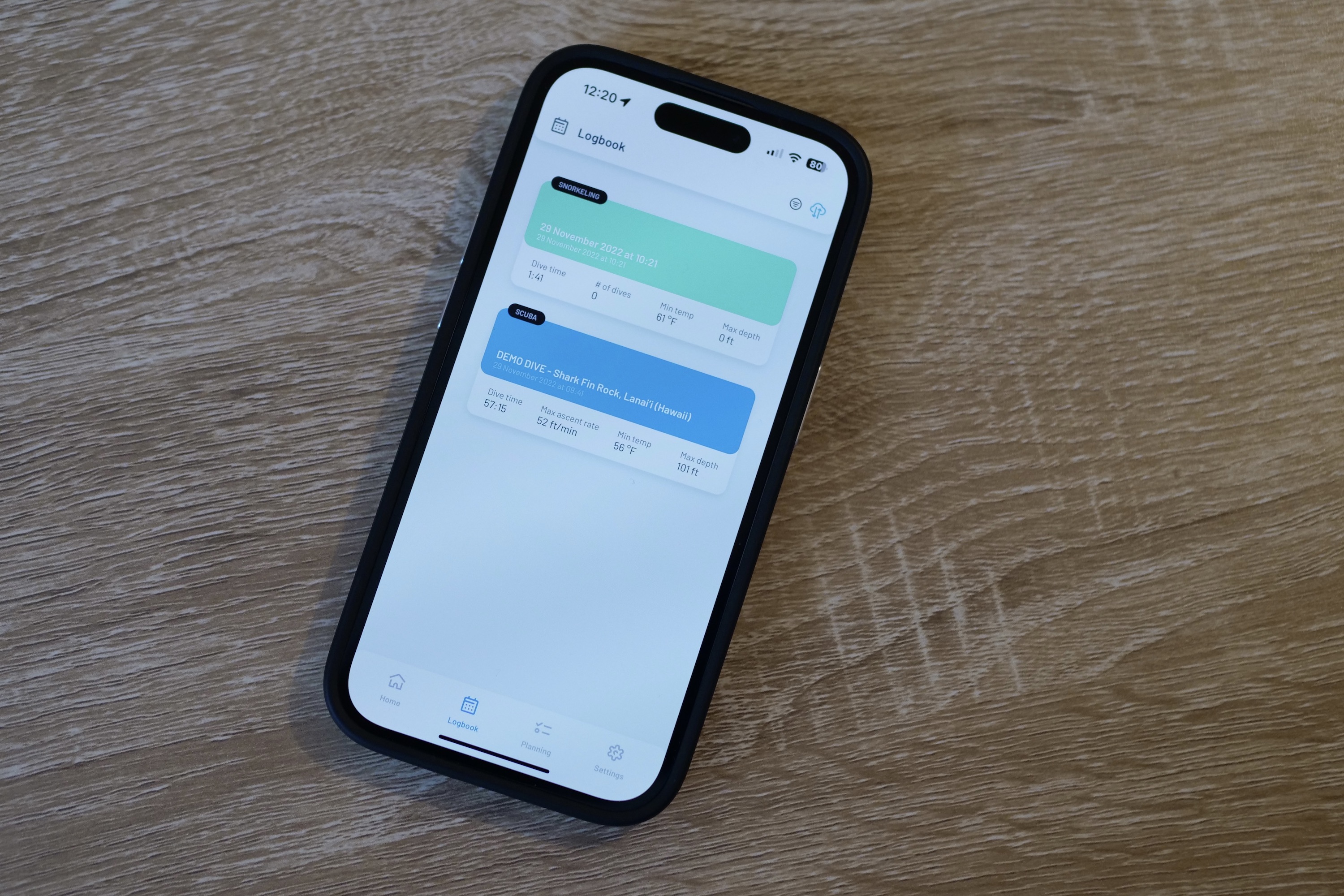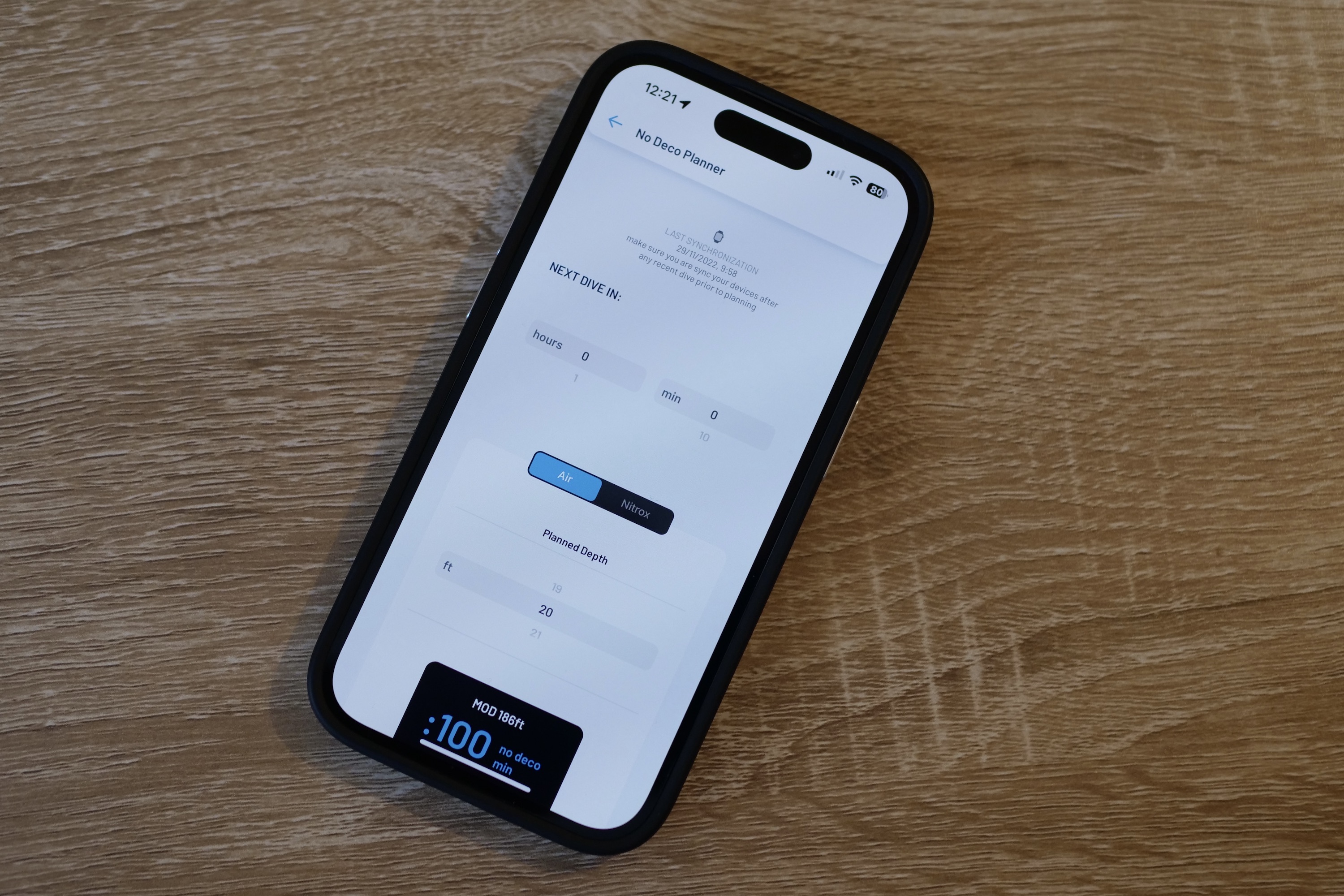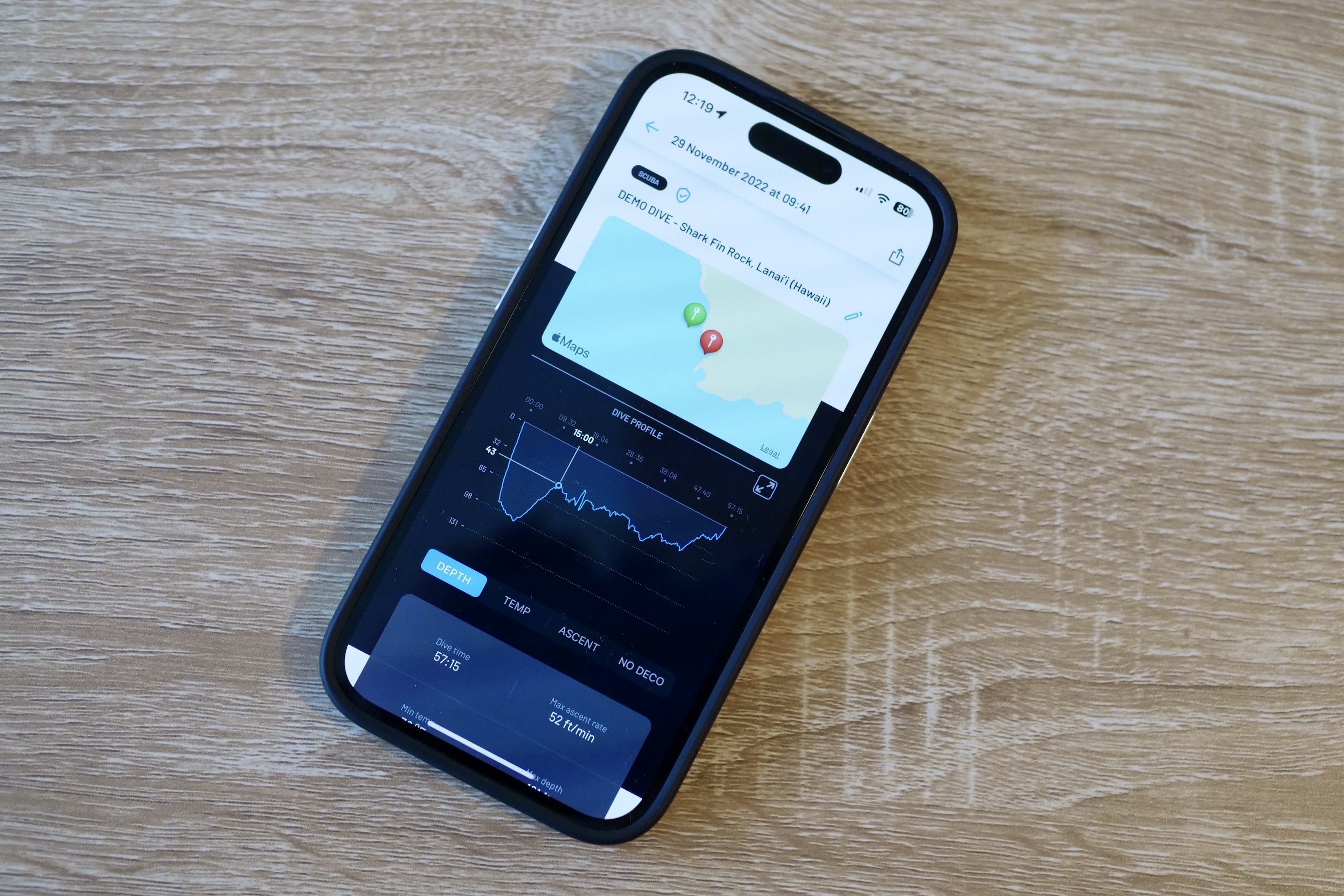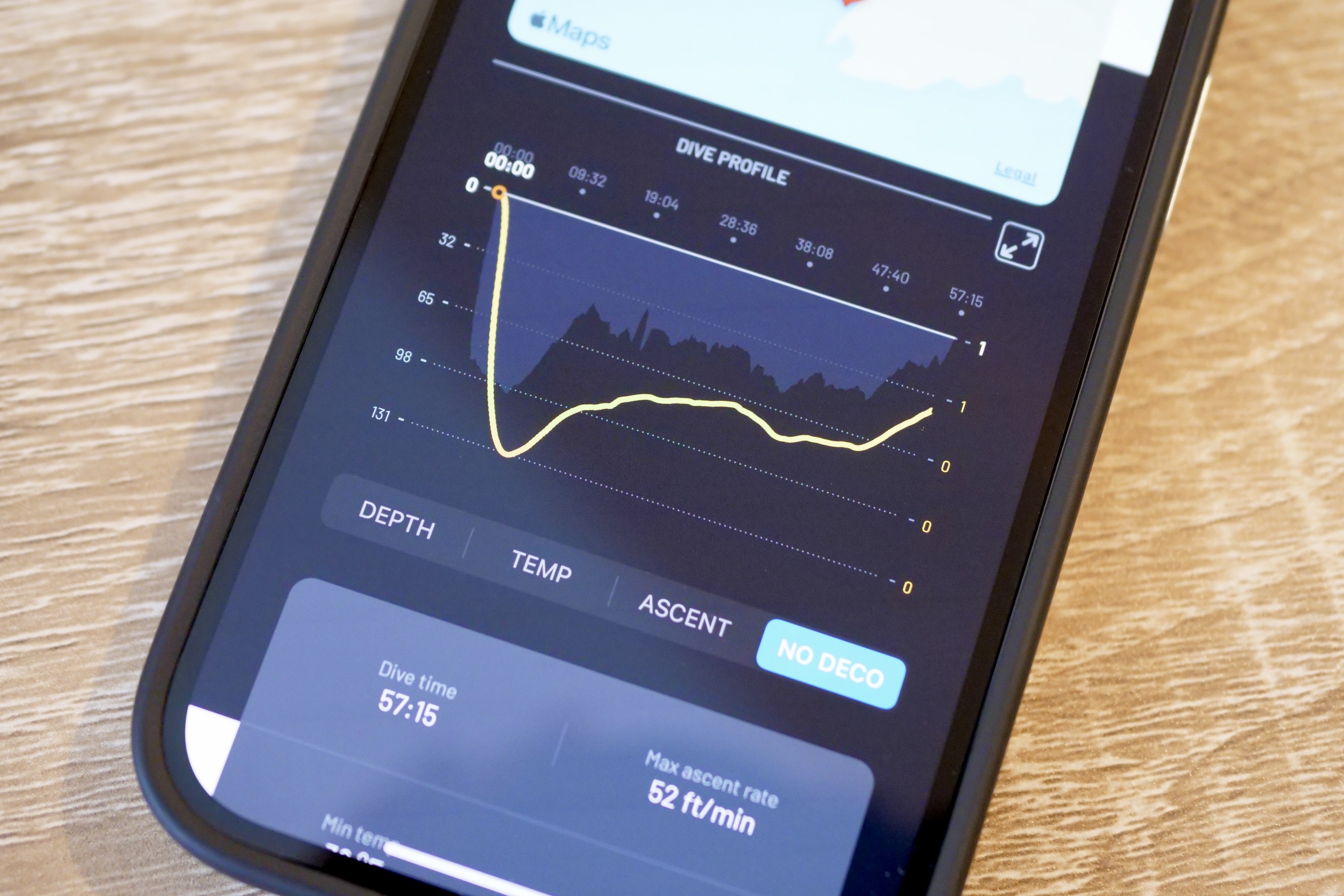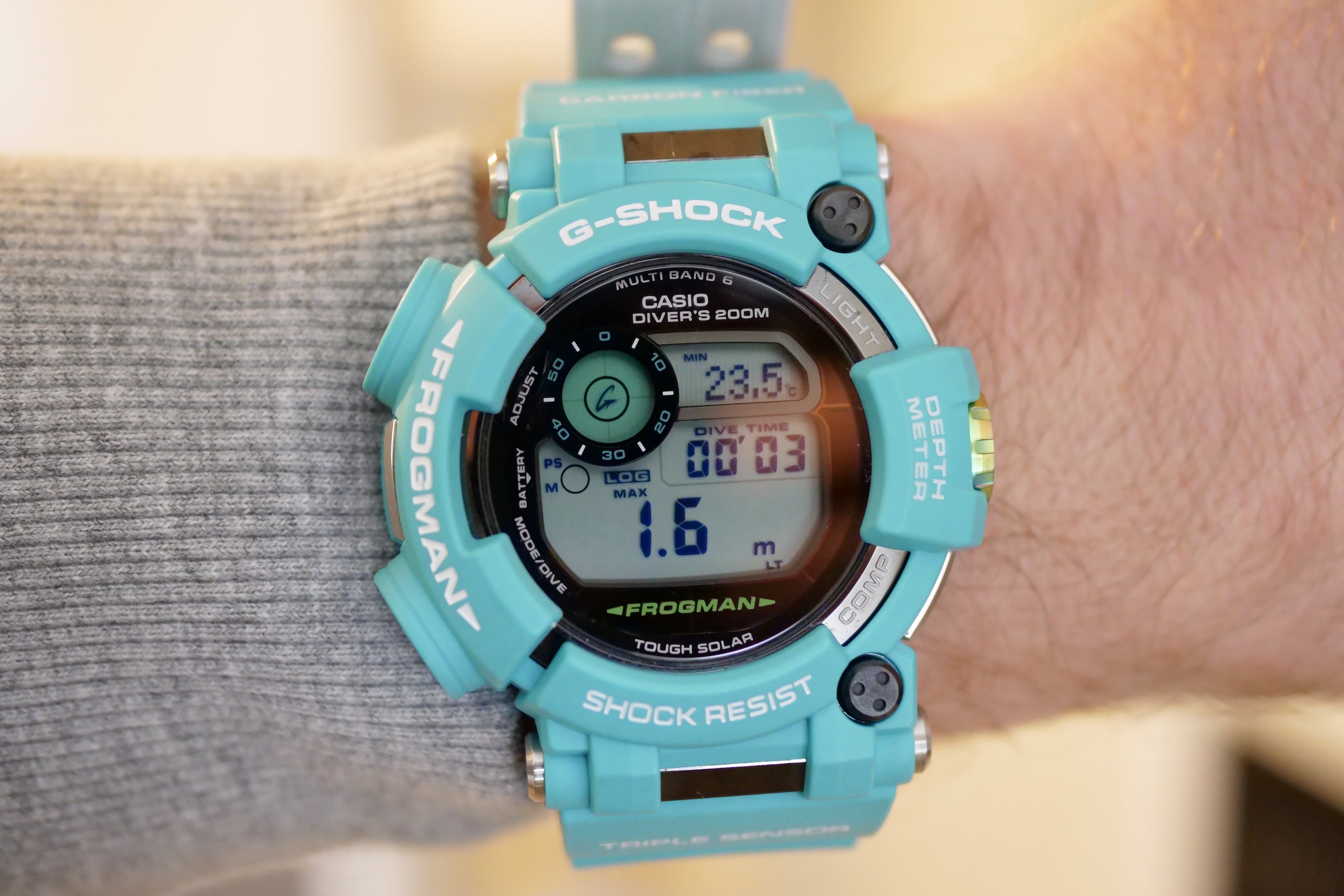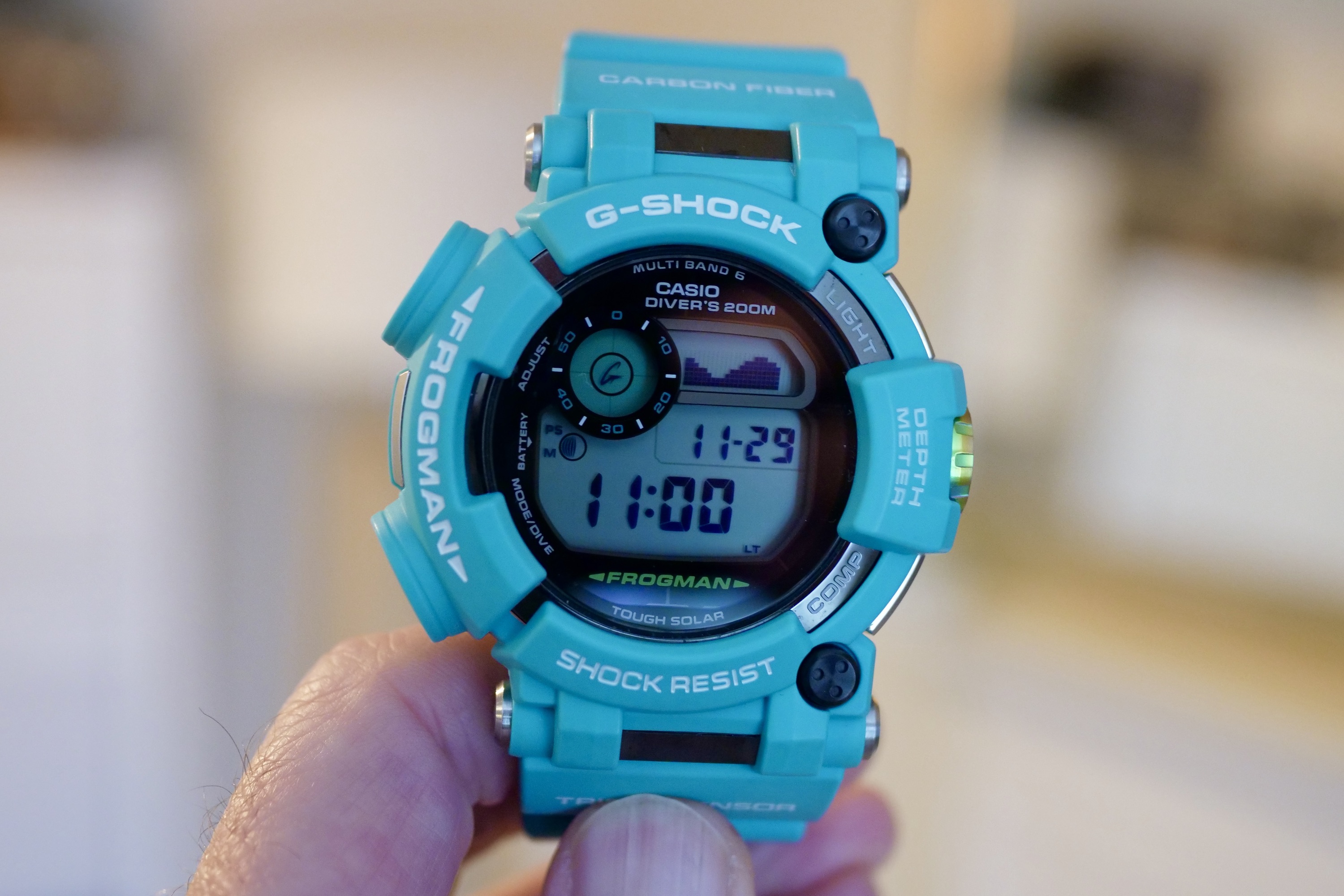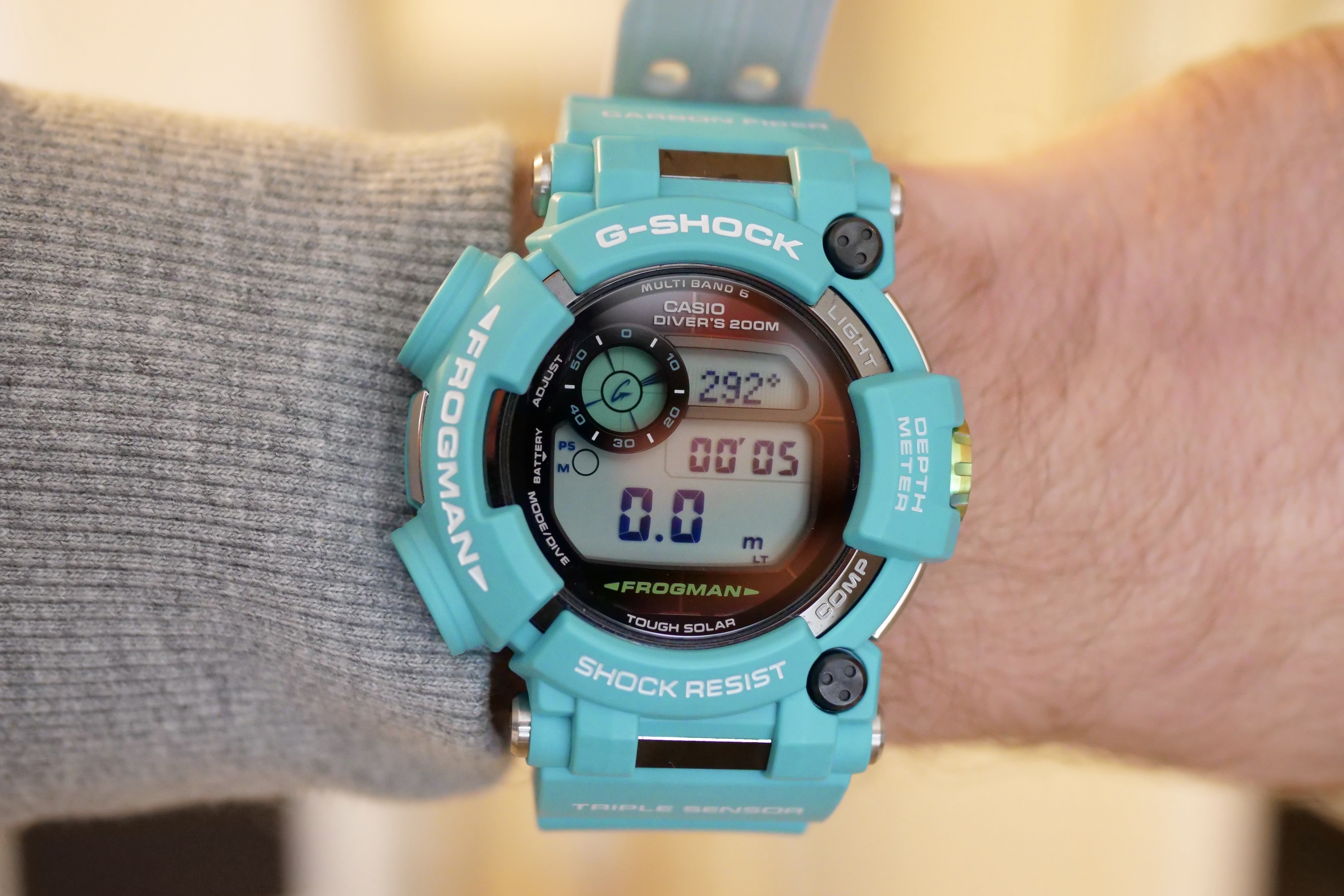The Apple Watch Ultra is an adventure smartwatch, with special features aimed at hikers, trekkers, outdoors enthusiasts, and divers. Apple collaborated with Huish Outdoors to create the newly released Oceanic+ app, which in combination with the sensors on the Apple Watch Ultra, turns it into a fully functioning, certified dive computer.
Before starting this article, I set out to take an in-depth look at the Oceanic+ app, and at the same time, compare its functionality and usefulness with the G-Shock GWF-D1000 Frogman dive watch — which also has a dive computer. It was by doing this that the Apple Watch Ultra, once again, surprised me. It did so because it encouraged me to do something new, and the Frogman has never quite managed the same thing. What do I mean? Let me explain.
What do they cost and what about certification?
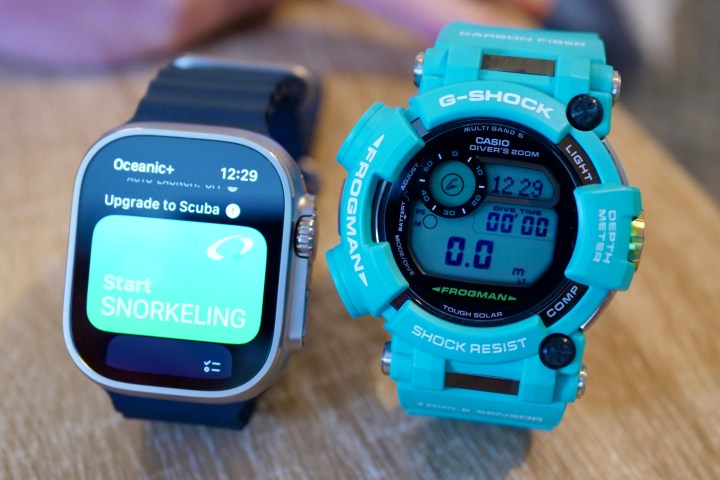
Before I go into detail, here’s what you need to know about the watches and the new app. The Apple Watch Ultra costs $800, and while the Oceanic+ app is free to download, you can only use the snorkeling function. To get the full scuba dive experience with decompression tracking, tissue loading, an unlimited logbook, and a location planner, you have to pay a $10 per month subscription or an annual $80 charge. There’s also a single-day payment option if you only dive occasionally. The G-Shock Frogman GWF-D1000 costs $750, but it can be difficult to find it in stock. You may have to look at specialist watch retailers or find a used model if you want one. The recent analog Frogman model doesn’t have the same dive computer functionality.
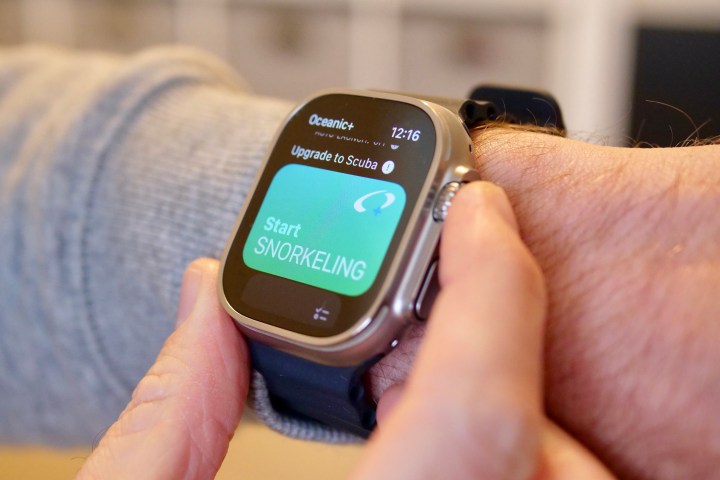
What about certification? The Apple Watch Ultra has both EN 13319 and WR100 certifications. The WR100 rating means the Ultra has a water resistance rating of 100 meters, and the EN 13319 certification means it meets an engineering standard set for depth gauges, and devices with combined depth and dive time measurement. It also covers water resistance and operation of the product, ensuring it’s suitable for use underwater.
The G-Shock GWF-D1000 Frogman is made to the ISO 6425 standard (as indicated by the Diver’s 200m mark on the face) and has 200-meter water resistance. To meet the ISO standard, the G-Shock has to show specific information about a dive, including time elapsed, visibility in darkness, resistance to magnetic forces, corrosion and temperature resistance, plus undergo a wide variety of tests for water resistance.
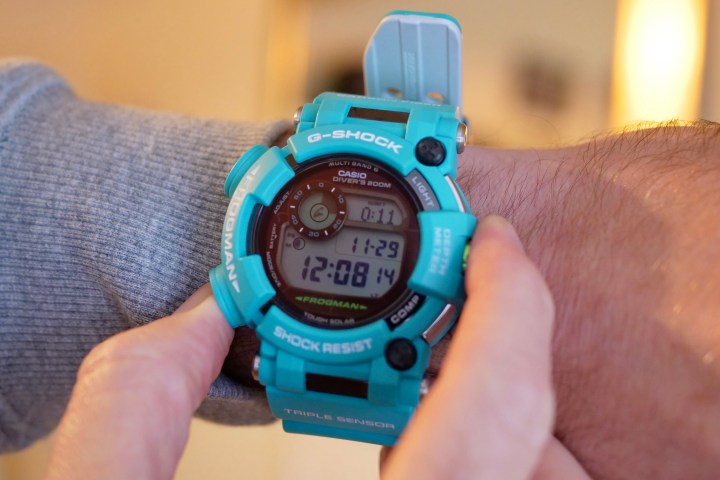
The team behind the Oceanic+ app describes the app as, “Designed to assist anyone looking to dip a toe into the adventures that await in the underwater world. The app teams up with Apple Watch Ultra to handle all of the complex calculations required to explore the ocean safely, offering simple, easy-to-understand cues and guidance before, during, and after a dive.”
The Oceanic+ app
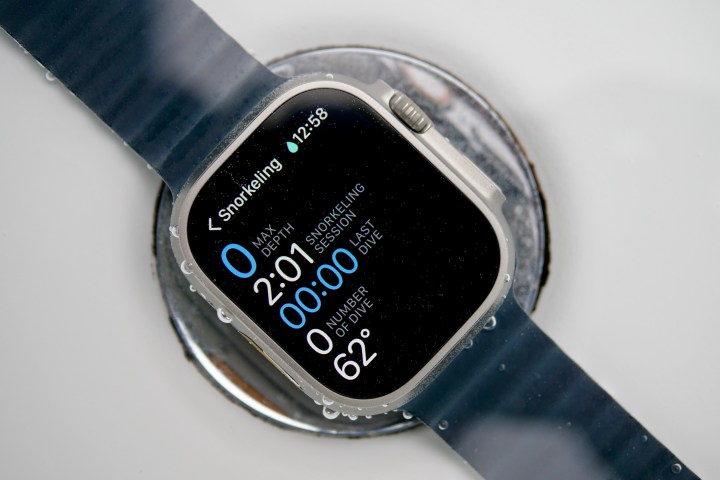
The Oceanic+ app is up and ready to go in a few moments. If you don’t pay for the subscription then you can only use the snorkeling feature, which shows the maximum depth reached, how many sessions you’ve logged in a set time period, the time of your dive, and the temperature. Scroll down with the Digital Crown, and the compass shows on the screen.
The touchscreen is not operational during this time, but the Apple Watch emits sound and vibrates against your wrist, which the Oceanic+ team says is a strong enough sensation that it can be felt under a 7mm thick wetsuit. If you pay to unlock the scuba mode, you get a lot more information — including depth, decompression time, the amount of time needed to return to the surface, ascent speed, and a battery meter for the Apple Watch. There are also warnings if you ascend too quickly, and an alert to stop if necessary.
Paying for the scuba mode also unlocks the location planner in the app, where data from your dives are also stored. The information shown includes all the data collected by the Apple Watch Ultra, plus you can add water conditions, the type of dive, the equipment used, and tag friends too. The planner shows tide times, air and water temperature, weather conditions, and wind speed. Finally, a series of graphs provide data on depth, temperature, and ascent, all plotted out over the time of your dive. It’s comprehensive, informative, and very clearly presented.
If you’ve used a fitness tracking app, you won’t have any problem understanding and using the Oceanic+ app. It’s clear the intention was to make it accessible to beginners and learners, and even when using it on dry land, the Watch app’s usability is obvious. Because the screen is locked, you can’t accidentally cancel the activity, and you need a long press of the Digital Crown to exit the dive program. It’s all very easy to use, just like the Apple Watch itself.
Comparing the Watch Ultra to the G-Shock
How do the Apple Watch Ultra and the Oceanic+ app compare to using the dive computer on the GWF-D1000? For a start, the G-Shock’s operation requires learning, especially if you’re only used to touchscreens and have never used a G-Shock. You activate the dive computer with a long press of the Mode/Dive button, but it won’t start the timer until you reach a depth of 1.5 meters.

The screen shows your depth and elapsed time, plus the compass can be called into action by pressing the Comp button. The circular complication shows time elapsed in minutes, and the complication to the right shows temperature when you’re underwater, and Surface Time when you’re not. This also shows on the main time screen when the dive computer isn’t active. In the same window, the watch shows a “Slow” warning and beeps if you ascend too quickly. The watch stores a log of each session with maximum depth, temperature, time elapsed, and compass data.
Elsewhere, the GWF-D1000 has a tide indicator that can be manually set to a specific location, a moon phase indicator, a temperature gauge, and all the usual G-Shock watch features — such as alarms, the world time, a timer, and a very bright backlight. It’s solar-powered and uses the MultiBand 6 radio wave system to maintain accurate time.
Using the G-Shock Frogman’s dive computer is very easy once you’ve learned the process, and the information shown on the watch face is clear, plus the backlight is really effective at illuminating the entire face. Remember, all this is essential for it to meet the ISO standard. However, it’s not as comprehensive, informative, or as interactive as the Apple Watch Ultra and the Oceanic+ app.
Now I want to go diving
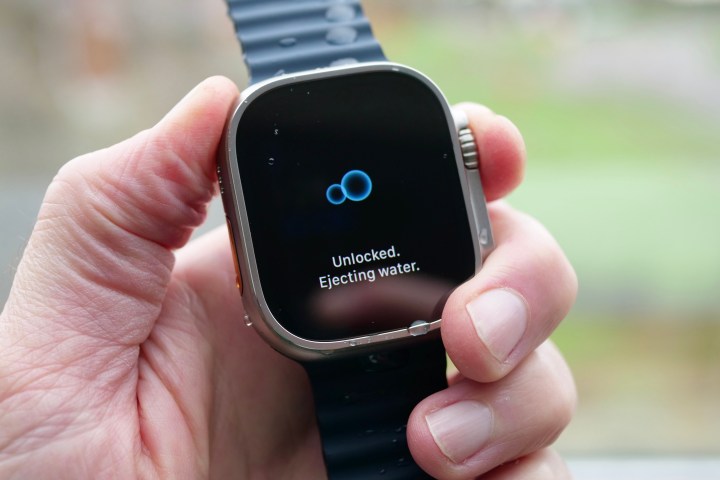
There’s nothing easy about scuba diving. It’s an activity to be taken very seriously, and one that requires training and certification to perform safely. I missed out on the chance to take my first lesson in 2020 (thanks pandemic), but haven’t really thought about it since — at least, until now. The Apple Watch Ultra and the Oceanic+ app bring fitness app-simplicity to the world of dive computers, even at a relatively basic level, and together this encourages me to actually go out and use them.
That’s not to say the Frogman is basic or uninspiring; it’s not. But I like it for different reasons than the Apple Watch Ultra. The Oceanic+ app feels like a tool I could use, even as a beginner, whether it was just some snorkeling or my first lesson with a trainer. Then, just like using a fitness or sleep app, I’d enjoy pouring over the relevant data afterward. The G-Shock Frogman is certainly tougher, but for anyone used to tracking workouts on a smartwatch, it doesn’t feel anywhere near as accessible.
The combo of the brilliant Apple Watch Ultra and the Oceanic+ app actually made me want to go and take some diving lessons, and that immediately reminded me why I loved the Apple Watch Ultra when I reviewed it. It’s so capable yet so accessible, so varied and user-friendly, that it encourages you to get out and do something. I’ve owned the Frogman for years, but it has never had that effect. In fact, no other wearable I’ve used has had this effect. It has all reinforced my opinion that the Apple Watch Ultra is something very special indeed.
